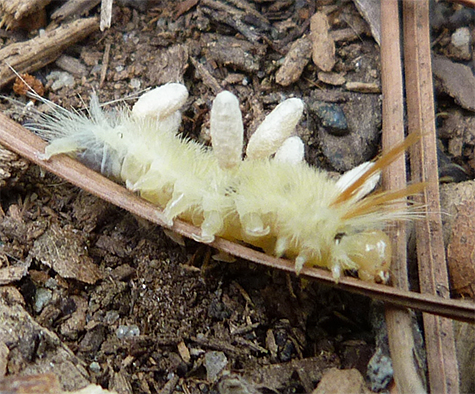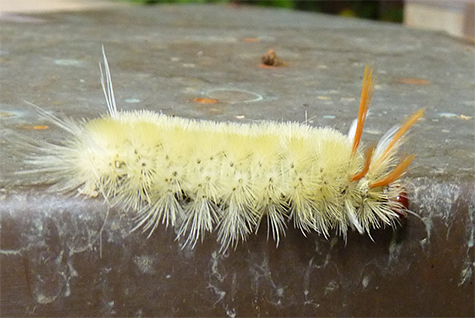I recently posted about a rustic sphinx moth caterpillar which had attached to it’s body dozens of tiny pupae of a parasitic wasp called a brachonid wasp. These tiny wasps (anywhere from 2 mm to 15 mm) lay their eggs into the bodies of caterpillars. The larvae eat the caterpillar from within and pupate inside tiny white cocoons on the outside of the caterpillar’s body, hanging there like so many banderillas on the back of a bull in the arena, it’s painful and will eventually end the life of the caterpillar.
While strolling through Catch the Wind, I noticed a small yellowish tufted caterpillar marching across the mulch which lay under a sycamore tree. The caterpillar had half a dozen Brachonid wasp pupae attached.

I most often see brachonid wasp cocoons attached to sphinx moth caterpillars, or hornworms. Brachonid wasps are apparently species specific, or at least genus specific. That means, certain species of brachonid wasps lay eggs on or in certain species or genera of caterpillars. There are about 1900 species of brachonid wasp in North America.

By the way, tussock moths are named for the tufts of setae (hairs) projecting out from the shorter setae which covers the bulk of the caterpillar.
tussock: a compact tuft especially of grass or sedge.